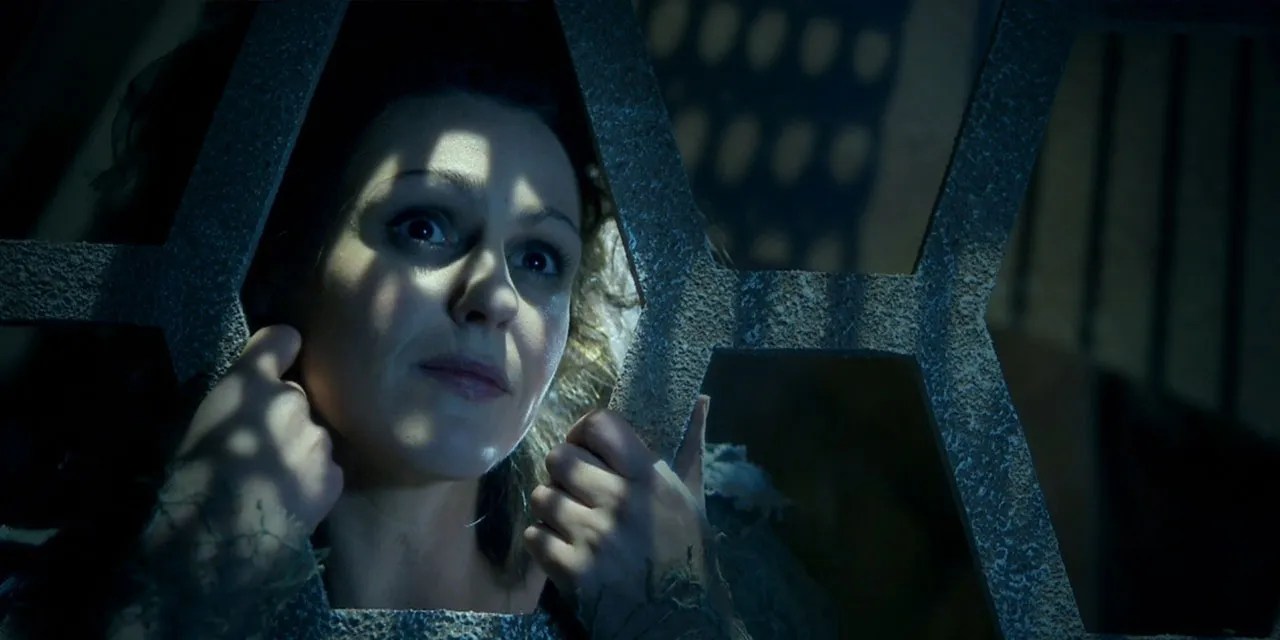With the recent release ofThe Sandman, thelong-awaited television adaptationof Neil Gaiman’s beloved graphic novel, fans of the sci-fi and fantasy writer are thrilled to see one of their favorite stories come to life. The past few years have seen Gaiman finding massive success in bring his stories to TV, with Starz' adaptation ofAmerican Godsand the wildly popular miniseriesGood Omens. However, neither of these shows marked Gaiman’s first foray into television. In fact, before these adaptations of his written works blew up, he penned an original tale for the small screen as a chapter in one of the biggest franchises in British pop culture:Doctor Who.
In Series 6 of New Who, Gaiman brought audiences the story of a sentient asteroid outside the universe, patchwork people with a sinister plot, echoes of Time Lords past — and most memorably, the TARDIS’s consciousness planted in a human body. It had all the dark whimsy, offbeat humor, and uniquely weird flavor that Gaiman’s fans have come to love from his work. But despite its distinct style, it fits smoothly into the arc of Series 6, building on the story and characters in a way that feels natural to longtime fans of the show.

RELATED:Doctor Who: The Saddest Companion Exits
In"The Doctor’s Wife," Amy, Rory, and the Eleventh Doctorare in deep space when a knock outside the door draws their attention. The Doctor finds a cube that appears to contain a message from an old Time Lord friend, and hoping to find more of his kind, he follows the signal to a bizarre junkyard outside the universe. When they get there, the TARDIS suddenly shuts down, and the trio meets the asteroid’s strange inhabitants: a creepily eccentric couple, a babbling madwoman named Idris, and an Ood.
Already, the setting and characters have Gaiman’s trademark style written all over them. The eerie mannerisms of the strange couple Auntie and Uncle are reminiscent of the sinister, not-quite-human characters in so many of Gaiman’s stories, such asCoralineandNeverwhere. As happens in many of his works, the main trio finds themselves in utterly alien circumstances, even for them — they’ve been all across the universe, but now they’re outside of it, and the rules they knew no longer apply.

Unsurprisingly, all is not as it seems to be in this bizarre junkyard. Auntie and Uncle have beenluring Time Lords herefor longer than anyone can guess, allowing the sentient asteroid (called “House”) to feed on the energy of the TARDISes. In order for it to do so, they must rip out the matrix of the TARDIS first, placing it in an organic body — and that’s what Idris is. As Amy and Rory are trapped in the TARDIS, House toying with them before he devours it, it’s up to the Doctor and his oldest companion to save them, and keep House from traveling to their universe to feed.
Idris, the personification of the TARDIS itself, is what makes this episode truly special as she works with the Eleventh Doctor to come up with a trademark brilliant plan. WithinDoctor Who, it is understood thatin order to operate a TARDIS, it is essential accept that it literally has a mind of its own. Matt Smith in particular leaned into this aspect of the Doctor in his portrayal, speaking directly to his ship and treating it as a sentient being. This made the Eleventh Doctor the perfect incarnation with whom to craft a story in which the soul of the TARDIS took on human form. And Gaiman was the perfect writer to bring this story to life.

Gaiman’s works often involve beings who experience time and reality differently than humans. The ancient deities ofAmerican Gods, the ghosts ofGraveyard Book, the mysteriously magical denizens of London Below inNeverwhere— all of them live by different laws of existence than we do. As the soul of the TARDIS, Idris exists across all of time and space at once. Likesome of Gaiman’s characters, she may appear insane; she babbles in cryptic riddles and confuses the past, present and future. But like the gods and fae creatures of his novels, Idris knows exactly what she’s doing; it’s just hard for a human-like form to contain and express her thoughts.
House, too, is familiar to Gaiman’s fans while still feeling right at home in theDoctor Whouniverse. Amy and Rory are toyed with by an incorporeal, seemingly omniscient entity. Their fears and insecurities are laid bare as it messes with their minds, turning their home into a dark and twisted place. The perversion of the familiar isanother theme in Gaiman’s work(for example, the “Other World” inCoraline). His villains often loom, much like House does, creating an eerie spine-tingling feel.
Of course, this episode wouldn’t be nearly so memorable if not for the cast that brought the story to life.Amy and Rory(Karen Gillan and Arthur Darvill) make the horror of House’s mind games almost tangible. Actress Suranne Jones gives a stellar performance as Idris, and Matt Smith plays off of her wonderfully, intuitively understanding his TARDIS as he has for hundreds of years. The interaction between the two is beautiful to watch, and makes it clear that Gaiman has been familiar with the show for a long time. He understands the dynamic that has always existed between the Doctor and his ship, and perfectly translated it into a dynamic between two people. The two bicker, they brainstorm, they complete each other’s ideas — and ultimately, they save the day.
Bringing one’s own style, especially a style as unique as Neil Gaiman’s, to such a long-standing franchise is no easy task.Doctor Whohas gone through many eras, and though each one feels a little different,there are always running themes. Some writers have struggled to bring their own voice to the series while staying true to everything fans love about the show. Gaiman, however, managed it wonderfully, adding to the mythos in the process. He created a whole new level of depth for the TARDIS itself, one that audiences won’t forget for a long time.